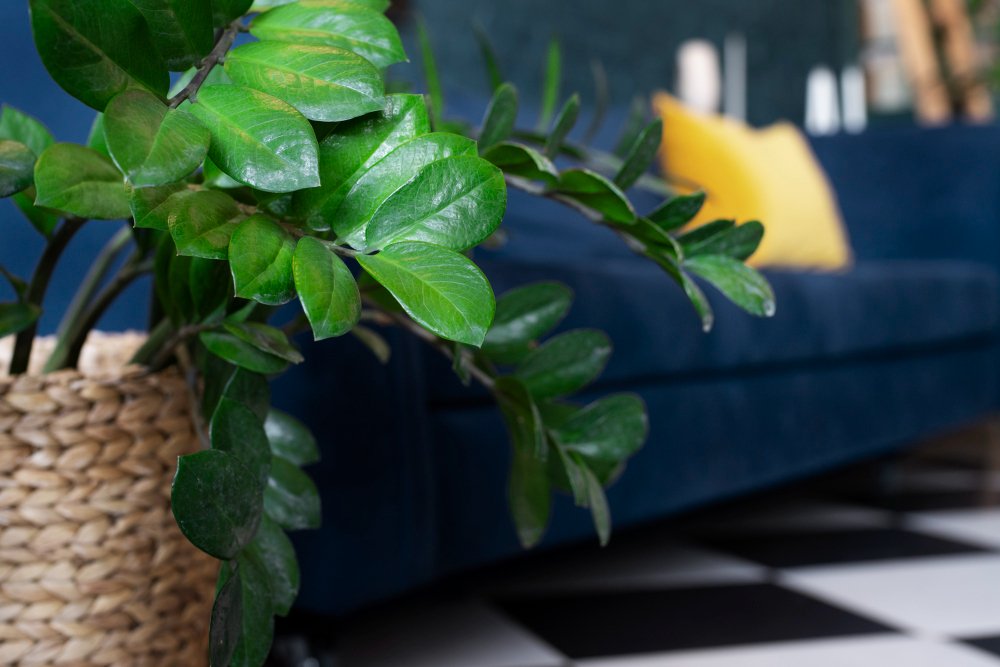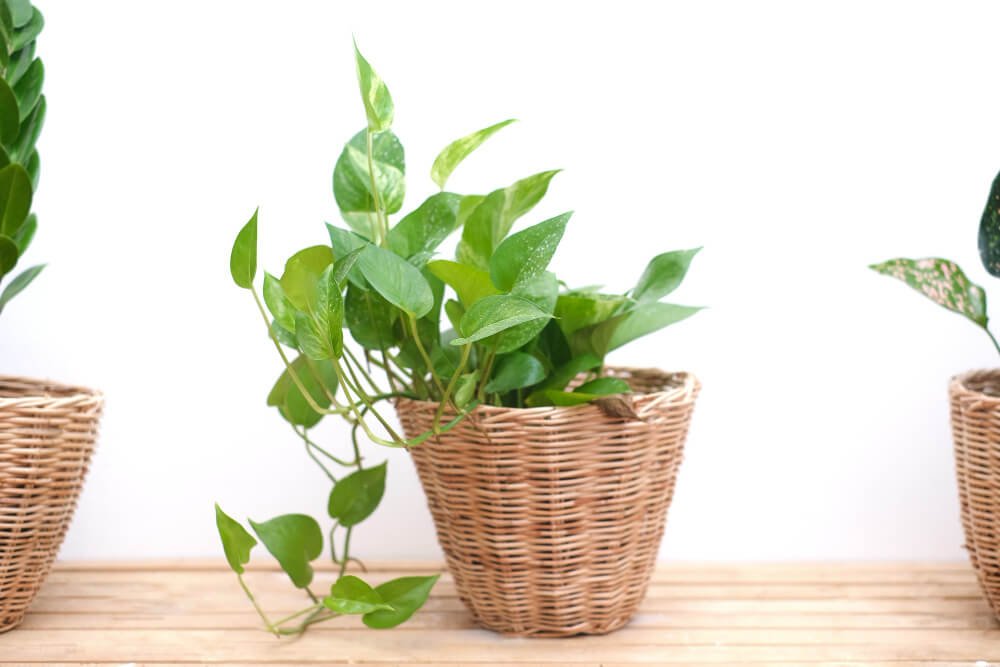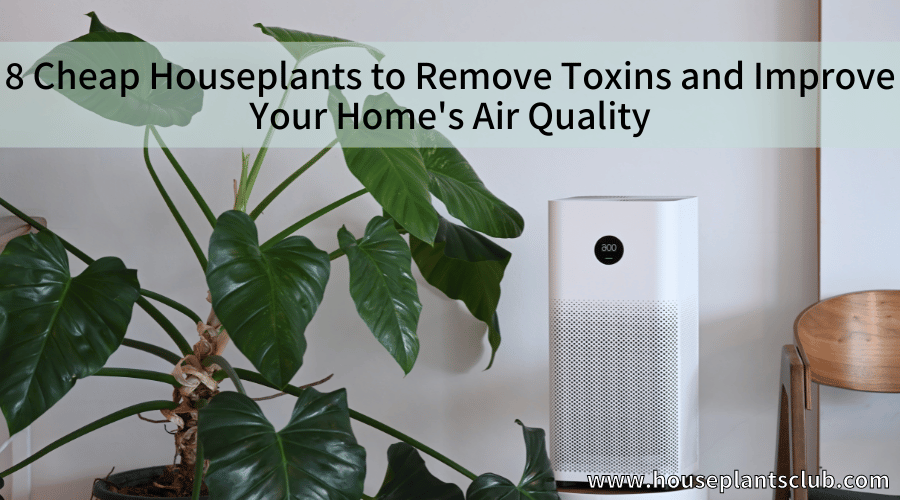If you’re looking to improve the air quality in your home, one of the best things you can do is add some houseplants. Plants add a touch of greenery to your space and have the amazing ability to filter out toxins and pollutants from the air. With so many different houseplants available, it can be hard to know which ones are the best for improving air quality. That’s why we’ve compiled a list of the top houseplants known for their air-purifying abilities. From the snake plant to the spider plant, these plants look great in your home and provide a range of health benefits. So whether you’re a seasoned plant enthusiast or looking to improve indoor air quality, read on to discover the best houseplants for removing toxins.
How Houseplants Can Improve Indoor Air Quality?

Houseplants are natural air purifiers, filtering out toxins and pollutants from the air through a process called phytoremediation. This process involves plants absorbing pollutants through their leaves and roots, breaking them down, and converting them into harmless substances that can be used as nutrients.
In addition to removing toxins, plants release oxygen and moisture into the air, improving air quality and humidity levels. This can help alleviate dry skin, allergies, and respiratory issues and boost overall mood and productivity.
NASA’s Clean Air Study
In the 1980s, NASA conducted a study to determine the effectiveness of houseplants in removing toxins from the air. The study found that certain plants were highly effective at removing toxins such as benzene, formaldehyde, and trichloroethylene from the air.
The study also found that plants effectively removed other harmful chemicals, including carbon monoxide and ammonia. These findings have since been used to determine the best houseplants for improving air quality in homes and other indoor spaces.
8 cheapest Houseplants for Removing Toxins
Here are the top cheapest houseplants for removing toxins and improving air quality in your home:
1. Snake Plant

Also known as mother-in-law’s tongue, the snake plant is one of the most effective plants for removing toxins from the air. It’s particularly effective at removing benzene, formaldehyde, and trichloroethylene, making it a great choice for homes with smokers or near high-traffic areas.
Snake plants are also easy to care for, requiring little water and sunlight. They thrive in low-light conditions and can go several weeks without watering.
2. Peace Lily

The peace lily is another cheap – highly effective plant for removing toxins from the air. It’s particularly effective at removing formaldehyde, benzene, trichloroethylene, and other harmful chemicals like ammonia and xylene.
Peace lilies are easy to care for, requiring moderate sunlight and regular watering. They also produce beautiful white flowers, making them a popular choice for home decor.
3. Spider Plant

The spider plant is another popular choice for improving indoor air quality. It’s effective at removing formaldehyde, benzene, carbon monoxide, and other harmful chemicals.
Spider plants are easy to care for, requiring moderate sunlight and regular watering. They also produce small, spider-like plants that can be propagated and grown in other areas of your home.
4. Rubber Plant

The rubber plant is a great choice for improving air quality in your home with the help of a cheap indoor plant. It’s effective at removing formaldehyde and other harmful chemicals like carbon monoxide and benzene.
Rubber plants are easy to care for, requiring moderate sunlight and regular watering. They also produce beautiful, glossy leaves that can add a touch of natural beauty to your home.
5. Boston Fern

The Boston fern is a highly effective plant for removing formaldehyde and other harmful chemicals from the air. It’s also effective at adding moisture to the air, making it a great choice for dry environments.
Boston ferns require moderate to high sunlight and regular watering. They also require high humidity levels, so keeping them in a humid environment or misting them regularly is important.
6. Aloe Vera

the next plant on our list is maybe the cheapest: Aloe vera. Aloe vera is a popular plant known for its healing properties, but it’s also effective at removing harmful chemicals from the air. It’s particularly effective at removing formaldehyde and benzene, making it a great choice for homes with smokers or near high-traffic areas.
Aloe vera plants require moderate sunlight and regular watering. They also produce a gel inside their leaves that can be used for various health and beauty purposes.
7. Golden Pothos

The Golden pothos is another highly effective plant for removing formaldehyde from the air. It’s also effective at removing other harmful chemicals like benzene and xylene.
Golden pothos plants are easy to care for, requiring low to moderate sunlight and regular watering. They also produce long, trailing vines that can add a touch of natural beauty to your home.
8. Areca Palm

The areca palm is a highly effective plant for removing formaldehyde and other harmful chemicals from the air. It’s also effective at adding moisture to the air, making it a great choice for dry environments.
Areca palms require moderate to high sunlight and regular watering. They also require high humidity levels, so keeping them in a humid environment or misting them regularly is important.
How to Care for Air-purifying Houseplants
While houseplants are relatively easy to care for but require some basic maintenance to keep them healthy and thriving. Here are some tips for caring for your houseplants:
- Water your plants regularly, but be careful not to overwater them. Most houseplants prefer slightly moist soil, so check the soil regularly to ensure it’s not too dry or too wet.
- Ensure your plants are getting enough sunlight. Most houseplants prefer moderate sunlight, but some may require more or less depending on the species.
- Keep your plants free from pests and diseases. Check your plants regularly for signs of pests or diseases, and take steps to control or prevent them as needed.
- Prune your plants as needed. Remove dead or damaged leaves, and trim back overgrown branches to encourage new growth.
Conclusion

Adding houseplants to your home is a great way to improve indoor air quality and promote a healthier, happier living environment. With so many different houseplants available, it’s easy to find the perfect plants for your home and lifestyle. Whether you’re looking for a low-maintenance plant that requires minimal care, or a more exotic plant that adds a touch of natural beauty to your home, there’s a houseplant that’s perfect for you. So why not add some greenery to your home today and start enjoying the many benefits of houseplants?
Recent Posts
Unlocking the secret to expanding your begonia maculata family is like discovering a treasure trove of green goodness. If you've ever marveled at the stunning beauty of angel wing begonia leaves and...
If you've ever found yourself marveling at the surreal beauty of air plant blooms, you're in for a treat! These enchanting bursts of color amidst a sea of lush green foliage are like nature's way of...

